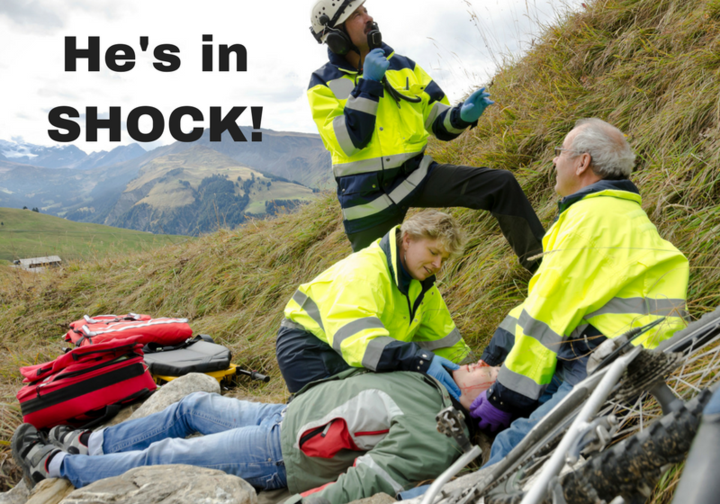How many times have you been on a job or at an incident and a bystander or family member says: “quick hurry… they’re in shock”. In my 17 years as a medic, this has to be one of the most common terms I have heard from the sidelines.
So, let’s have a look at shock and discuss it a bit further.
Shock: A state of inadequate tissue perfusion caused by circulatory insufficiency that creates an imbalance between oxygen supply (delivery) and oxygen demand (consumption).
Despite the term seeming generic, there are many different types of shock, and these are broken down into categories based on their causes.
Shock can be classified into five main categories:
- Hypovolaemic: Hypovolaemic shock is caused by insufficient circulating blood volume. This simply means there is not enough water flowing through the pipes. This is a common form of shock found in the prehospital setting and can be caused by haemorrhage (internal & external), burns, diarrhoea & vomiting and heat exposure.
- Cardiogenic: Cardiogenic shock is caused by heart failure. Specifically, the heart is unable to pump effectively. Commonly caused by damage to cardiac muscle from myocardial infarction (heart attack), dysrhythmias (abnormal heart rhythm), congestive heart failure, and heart valve issues, and infections or disease of the cardiac muscles.
- Obstructive: Impairment of the circulatory blood flow outside of the heart. Obstructive shock can occur with Tension Pneumothorax, Cardiac Tamponade, Pulmonary Embolism and Hyperinflation (severe asthma).
- Distributive: Distributive shock results from excessive vasodilation. Simply put, in distributive shock, the hoses get wider (vessels dilate) but the water volume (amount of blood in the body) remains the same and the pressure drops. The most common cause being from sepsis. Other causes include Anaphylaxis, Systemic Inflammatory Response Syndrome (SIRS) and Neurogenic Shock (brain and spinal cord injuries).
- Dissociative: this uncommon and often forgotten form of shock occurs when the patient has been exposed to a harmful chemical such as CO poisoning or cyanide. Whilst the cardiovascular system is functioning normally, perfusion problems occur because the blood has a reduced ability to carry oxygen to the tissues. This occurs because the chemical binds to the hemoglobin and takes the space where oxygen would normally bind.
Assessment of the Shocked Patient
A detailed primary survey and regular re-assessment of your patient is critical in identifying a shocked patient. A lot of the time a shocked patient will look unwell. “looks crook is crook”. But let’s discuss the primary survey observations in more detail.
- Breathing: Increased respiratory effort. This is to compensate for the decreased oxygen in the tissues. An increase in respiratory rate is often one of the first signs of a critically ill or deteriorating patient.
- Circulation: You can tell a lot about a patient during the circulation assessment. Skin; pale, cool & clammy (anaphylactic patients will often be red with urticaria), Pulse; weak and rapid (over 100 bpm). Capillary refill >2 secs, BP < 90mmHg (or a rapid drop of >40mmHg for hypertensive patients). BP is usually a late sign so don’t rely on it solely as an indicator of shock.
- Disability: Confusion, Agitation or altered level of consciousness. Your brain REALLY likes oxygen.
Treating the Shocked Patient
- Treat the cause of the shock if possible. Stop the bleeding ect
Maintain oxygenation and apply supplemental O2. - Posture the patient supine (laying down) if possible. This way the body isn’t fighting gravity to pump the available blood around the body.
- Gain IV access and deliver fluids as per your local guidelines. Some organisations will recommend 20ml/kg for all shock but trauma. In the trauma (haemorrhage) we don’t want to “dilute” our clotting factors and will deliver fluids to maintain a radial pulse.
